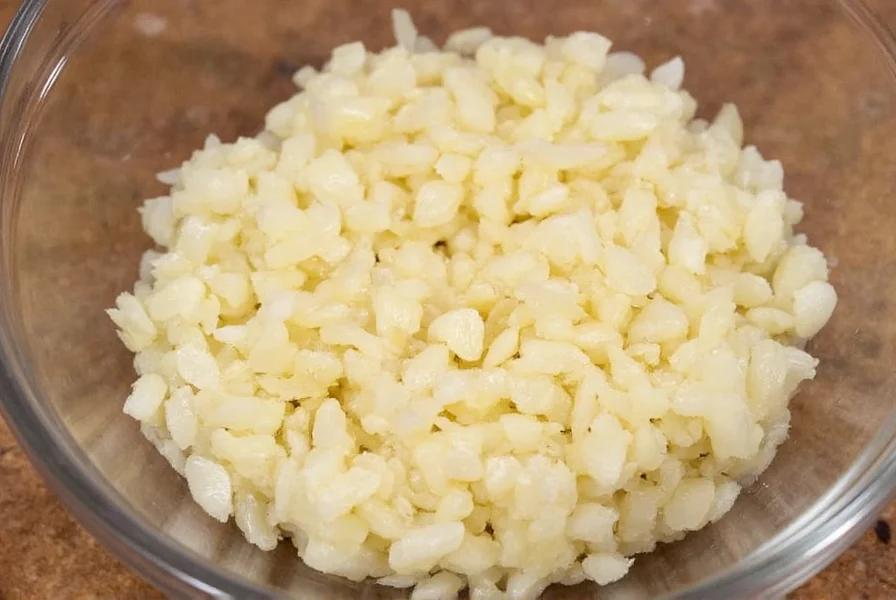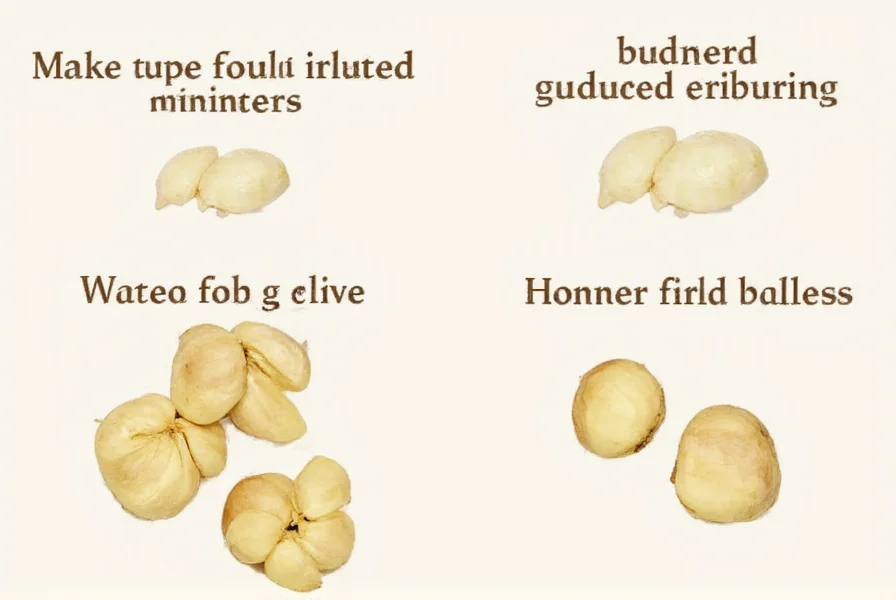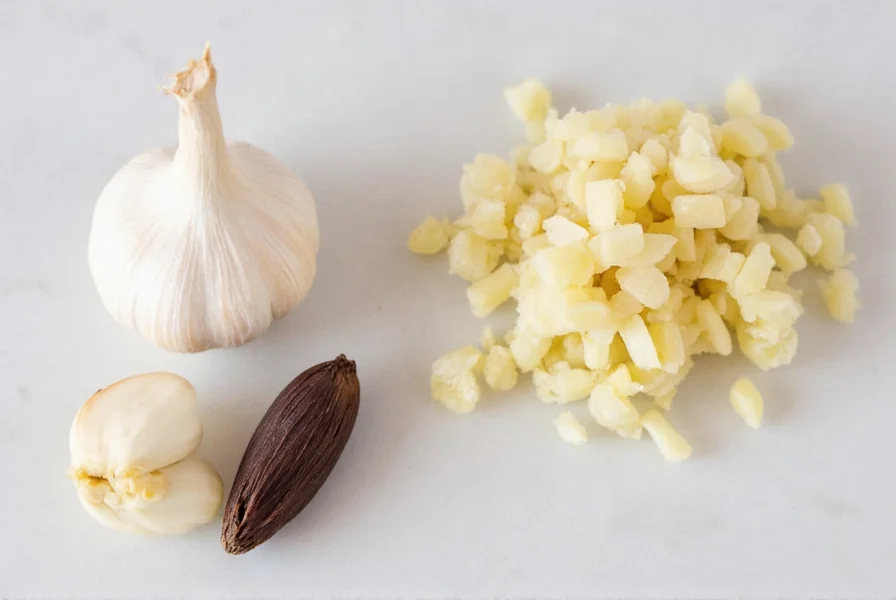When following recipes that specify garlic measurements, knowing the exact minced garlic to clove conversion prevents culinary mishaps. Fresh garlic's potency varies by variety and size, but standard culinary guidelines provide reliable benchmarks for consistent results.
Understanding Minced Garlic Measurements
Garlic measurement confusion creates one of the most common kitchen frustrations. A single medium garlic clove (about 1 inch long and 3–4 inches in circumference) produces 1–1.5 teaspoons of freshly minced garlic. This ratio changes when using pre-minced garlic from jars, which often contains preservatives affecting both volume and flavor intensity.
| Garlic Form | Equivalent to 1 Medium Clove | Flavor Intensity |
|---|---|---|
| Whole garlic clove | 1 clove | Mild (when cooked whole) |
| Freshly minced garlic | 1–1.5 tsp | Strong (immediate release) |
| Pre-minced jarred garlic | 1.5–2 tsp | Moderate (preservatives alter flavor) |
| Garlic powder | 1–2 pinches | Concentrated (use sparingly) |
Why Minced Garlic Differs From Whole Cloves
When you mince garlic, you rupture more cell walls, releasing allicin—the compound responsible for garlic's characteristic aroma and health benefits. This enzymatic reaction creates more intense flavor than whole cloves, which release compounds gradually during cooking. The minced garlic clove ratio matters because improper substitution can make dishes overwhelmingly pungent or disappointingly bland.
Chefs prefer fresh minced garlic for dishes requiring immediate flavor impact, like salad dressings or finishing oils. Whole cloves work better for slow-cooked dishes where gradual flavor infusion is desired. Understanding these nuances helps you master the minced garlic to whole garlic conversion in any recipe.

Practical Measurement Techniques
For accurate minced garlic measurements, follow these professional kitchen practices:
- Use a microplane grater for ultra-fine mince that measures more consistently
- Pack minced garlic lightly into measuring spoons (don't compress)
- For large batches, weigh garlic: 1 medium clove = 3–7 grams (5 grams average)
- When substituting jarred minced garlic, use 25% more than fresh to compensate for preservative dilution
Remember that garlic size dramatically affects the minced garlic equivalent to one clove. Small cloves (under 1 inch) yield about 1 teaspoon, while jumbo cloves can produce up to 2 teaspoons of minced product. Adjust according to your specific garlic variety and recipe requirements.
Storage Impact on Minced Garlic Measurements
Homemade minced garlic loses potency faster than whole cloves due to increased surface area exposure. When using stored minced garlic, increase measurements by 20% to compensate for flavor degradation. Properly stored in an airtight container with a thin layer of olive oil, fresh minced garlic maintains optimal flavor for 5–7 days in the refrigerator.
Never freeze pre-minced garlic in water-based solutions, as this creates texture issues. Instead, freeze minced garlic in oil cubes for precise portioning. Each frozen cube typically equals one garlic clove's minced equivalent, simplifying recipe conversions.

Common Substitution Mistakes to Avoid
Cooks frequently make these errors when converting between minced garlic and whole cloves:
- Using equal volumes of jarred and fresh minced garlic without adjustment
- Not accounting for garlic size variations in recipes
- Adding minced garlic too early in cooking, causing bitterness
- Using garlic powder as 1:1 substitute for fresh minced garlic
When substituting minced garlic for whole cloves in slow-cooked dishes, add it during the last 15 minutes of cooking to preserve its delicate flavor compounds. For raw applications like dressings, let minced garlic rest for 10 minutes after preparation to develop optimal flavor before incorporating into your recipe.
Professional Chef Techniques
Master chefs employ specific methods when working with minced garlic to maximize flavor while maintaining measurement accuracy:
- The Salt Method: Sprinkle coarse salt over garlic before mincing to create friction for finer mince
- Oil Separation: When using jarred minced garlic, drain excess oil before measuring
- Flavor Calibration: Taste dishes before final seasoning, as minced garlic's potency varies by freshness
- Batch Consistency: Mince all garlic at once for uniform texture and flavor distribution
Understanding the precise minced garlic to clove ratio transforms your cooking accuracy. Whether you're following a traditional Italian recipe requiring subtle garlic notes or a bold Asian dish demanding pronounced flavor, proper measurement ensures culinary success every time.











 浙公网安备
33010002000092号
浙公网安备
33010002000092号 浙B2-20120091-4
浙B2-20120091-4